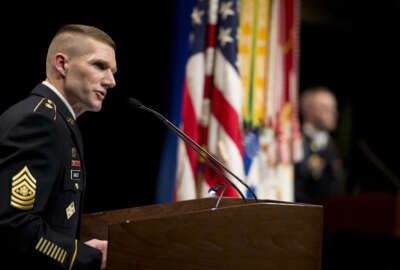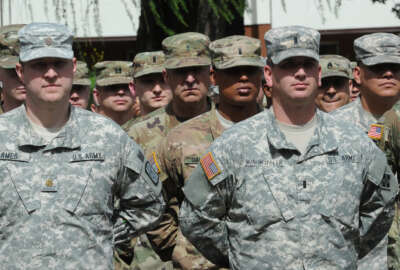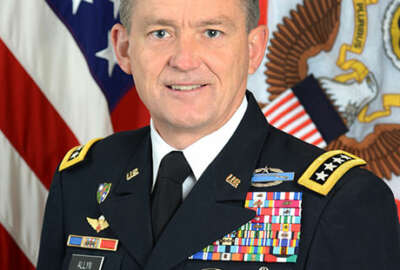 Exclusive
Exclusive DoD starts crackdown on more than 280,000 non-deployable troops
The military can begin immediately offboarding service members who have not been deployable for the past year.
The military can now begin pushing out almost any service member who has not been able to deploy in the past year and will be required to cut out those troops starting Oct. 1.
The Defense Department is cracking down on the roughly 286,000 troops who are not healthy enough to go overseas.
New policy put out by Undersecretary of Defense for Personnel and Readiness Robert Wilkie on Feb. 14, could affect 13 to 14 percent of the military force.
“The situation we face today is really unlike anything we have faced, certainly in the post-World War II era,” Wilkie said during a Feb. 14, Senate Armed Services Personnel Subcommittee hearing. “If Mr. [Jeff] Bezos at Amazon walked into Christmas week and 14 percent of his workforce could not perform their duties then [it] would no longer be the largest company in the world.”
The new policy exempts pregnant and postpartum service members, but they are the only group getting a pass in the policy.
Troops who have been non-deployable for more than a year may obtain a waiver from the secretary of their military department to stay in the service.
The military may also begin separating a person from the service once a determination has been made that he or she will remain non-deployable for more than a year. The military does not have to wait the full year.
Medical boards will review the conditions of those who have been wounded.
Service members will be given disability or administrative separation.
DoD began exploring its options for non-deployable troops in July after Defense Secretary Jim Mattis made clear “every action [by DoD] will be designed to ensure our military is ready to fight today and in the future.”
Wilkie admitted the military is to blame for some troops being non-deployable. He told Congress junior officers are responsible for making sure troops visit the dentist so they are considered dentally ready to deploy.
“The other thing that we have seen is that in the down years in terms of recruiting for the military we offer too many medical waivers to get into the service. The medical conditions that those service members have when they receive those waivers follow them into the service as they progress through their careers,” Wilkie said.
A Navy doctor speaking to Federal News Radio on the condition of anonymity last summer confirmed waivers were widespread.
“When I was deployed, I was surprised to find people there who had significant medical problems that one would think would prevent them from deploying, and yet they were there. God knows who signed what waiver to get them there,” the Navy doctor said.
The doctor said he has taken care of sailors with “every chronic condition you can imagine,” from chronic back pain, to type-two diabetes, to asthma.
“You name it, there’s someone in the military who has it,” the doctor said.
Non-deployable troops have been a growing problem in the military. The Army is especially worried about its non-deployable numbers.
Sgt. Maj. of the Army Daniel Dailey said in 2015 that non-deployable soldiers were the number one problem in the Army.
“If you will not or cannot fight and win, then there’s no place for you in the Army,” Dailey said. “We have to become unemotional about this. We have a job to do.”
About 100,000 soldiers are currently non-deployable and only 10 percent of the Army’s non-deployable soldiers will ever be fit to serve again.
In 2016, then-Vice Army Chief of Staff Gen. Daniel Allyn said the Army can do a much better job in speeding up the recuperation of the 10,000 troops that can become deployable again.
About 80 percent of non-deployable troops reached that status due to medical issues, Allyn said.
“We know that we can gain efficiency in terms of speed with which we transition these folks, either back to full readiness or to another phase,” Allyn said. “We have to work with the [Department of Veterans Affairs] on the vast majority of the rest of them to ensure we transition them to [VA] care as efficiently and effectively as possible.”
Part of the reason for the high number of non-deployable soldiers is the rate of obesity in the Army. Soldiers are required to stay between 20 percent and 26 percent body fat for men and 30 percent and 36 percent body fat for women.
More than 10 percent of the service is overweight, deeming them unfit to deploy.
The Army even went as far as to consider deployment pay, incentivizing soldiers to stay fit.
“We have to stimulate their responsibility. It’s a soldier’s responsibility to maintain deployability. They all raised their hands, including me, and swore they will defend the Constitution of the United States of America. That didn’t mean back in the U.S. That means wherever the Constitution needs to be defended. We have to encourage soldiers,” Dailey told Federal News Radio last October. “We should tie all incentives to deployability. Soldiers who deploy should make more money. We should have a deployment pay and that’s something we are working on right now.”
Dailey said the privileges awarded to soldiers should be contingent on their deployability.
“The great gifts we get from the American taxpayers should all be applied to deployability. Things like tuition assistance. You should not be able to use tuition assistance unless you are deployable. It is for a readiness requirement. It is to support our soldiers and retain our soldiers over time. It is not a right,” Dailey said.
Copyright © 2025 Federal News Network. All rights reserved. This website is not intended for users located within the European Economic Area.
Scott Maucione is a defense reporter for Federal News Network and reports on human capital, workforce and the Defense Department at-large.
Follow @smaucioneWFED





